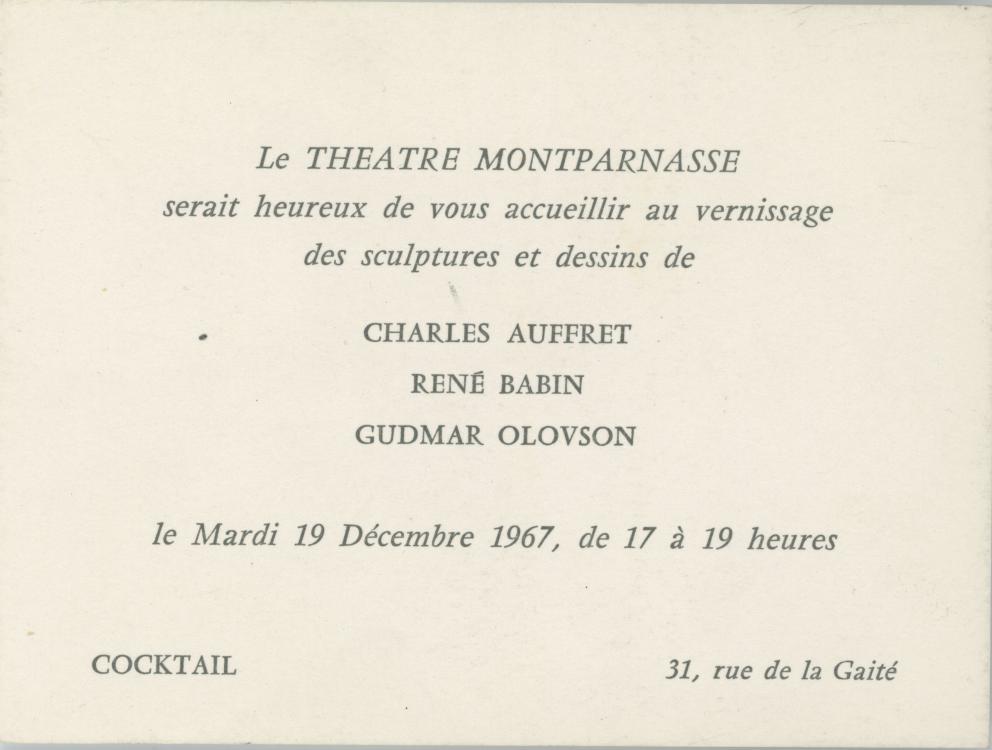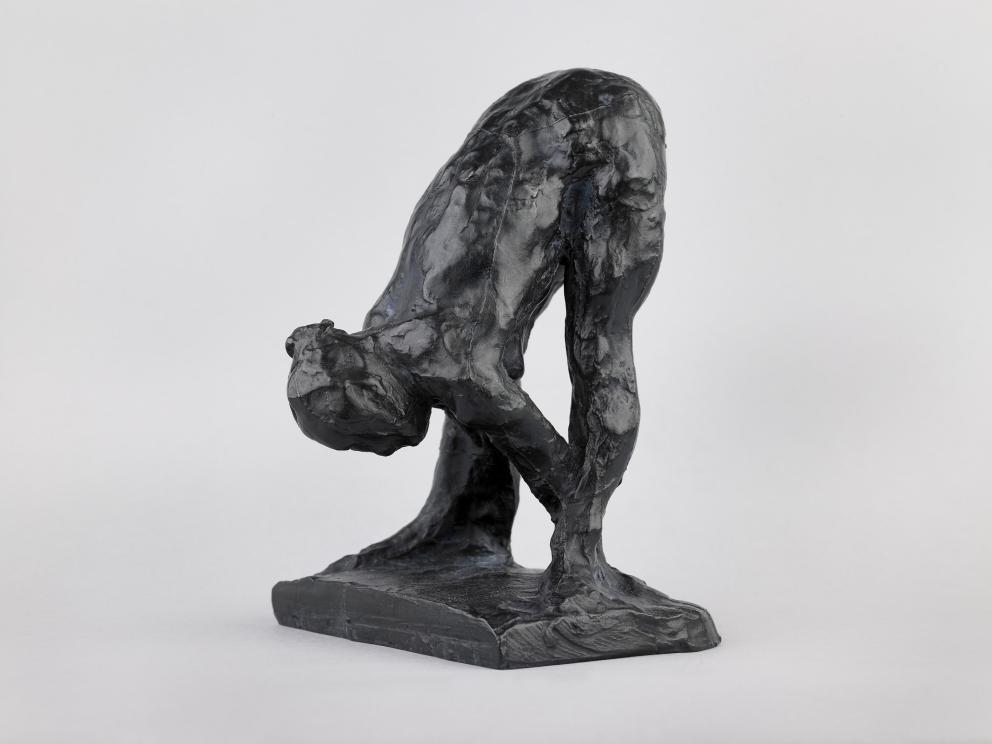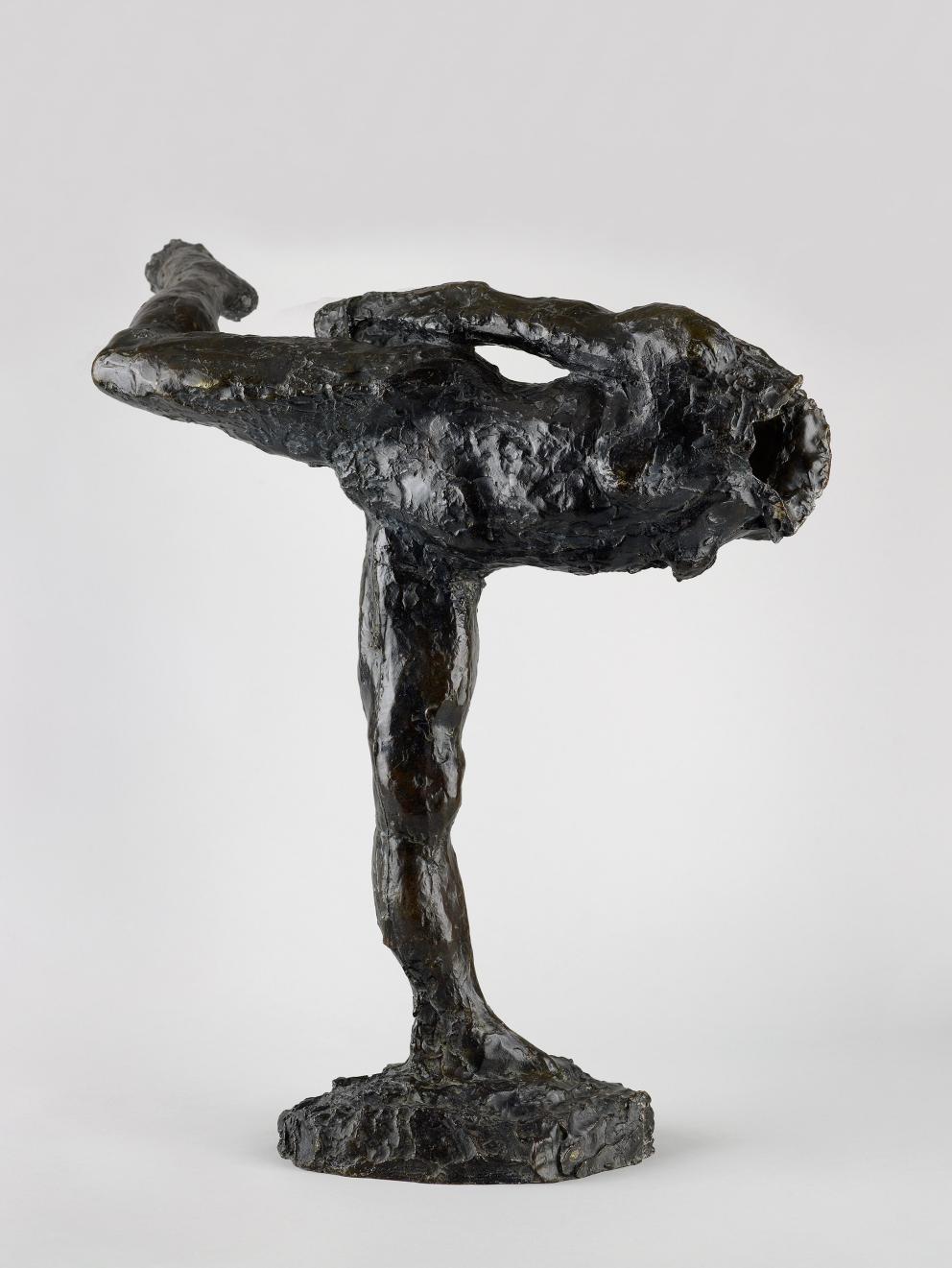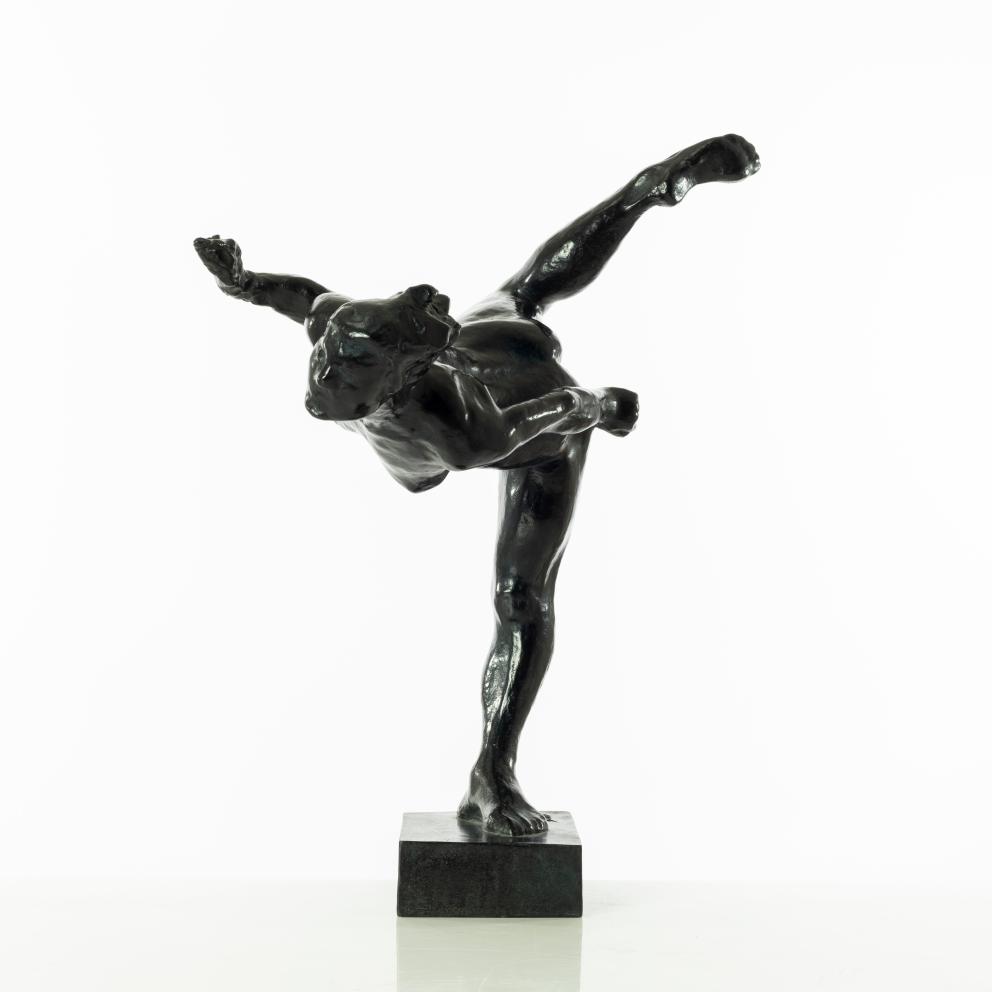1 model 2 poses and 3 styles on the theme of dance. AUFFRET BABIN OLOVSON
Charles Auffret, René Babin and Gudmar Olovson are three sculptors living and working in Paris; they belong to the same movement of figurative sculpture centred on the human being. They met, exchanged ideas and sometimes got together for joint work sessions. They exhibited together in 1967 at the Théâtre du Montparnasse in Paris, then in 1970 at the Färg och form gallery in Stockholm (3 Parisskulptörer, exhibition from 24 April to 22 May 1970, Färg och form, Stockholm).
A model, a former trapeze artist forced to give up her profession after a fall, brought them together around the theme of dance. She was appreciated for her flexibility and ability to hold difficult positions. When she posed for Charles Auffret in 1966, the model for La Gymnastique was born. Then, in 1969, René Babin and Gudmar Olovson worked together to create L'Étoile and La Concorde respectively, based on an aerial pose of the gymnast.


Here are three variations on the same theme:
Charles Auffret (1929-2001)
Gymnastics, 1966
Bronze proof, n°5/12
Lost wax cast by Bodin
Signed : CH. AUFFRET
H. 21 ; L. 15 ; P. 15 cm
Bibliographie :
Charles Auffret, Sculptures – dessins, Paris, Galerie Nicolas Plescoff, 2001.
Charles Auffret (1929-2001), Sculptures - dessins, Voiron, musée Mainssieux, 2002.
Charles Auffret, Rome, villa Médicis, 9 mai – 15 juillet 2007, Somogy, 2007.
This sculpture emanates harshness and gentleness, strength and restraint, thanks to the choice of simple planes and intensely sensitive modelling that focuses on the essential. Charles Auffret is very fond of this work, one of the first of his sculptures to be published.


René Babin (1919-1997)
The Star, 1969
Bronze proof, n°1/8
Lost wax cast by Attilio Valsuani
Signed : R. Babin 1969
H. 67 ; L. 34 ; P. 66 cm
Bibliographie :
3 Parisskulptörer, exposition du 24 avril au 22 mai 1970, Färg och form, Stockholm, p. 4, (repr.).
Patrice Dubois, René Babin, exposition de sculptures, Paris, Axa Assurances, avenue Matignon, octobre - novembre 2001, p. 2 (repr.).
Les architectes du sensible, Panorama de la sculpture indépendante au XXème siècle, Paris, galerie Malaquais, 14 mai - 31 juillet 2004, p. 4 (repr.).
"It is this ability to express life in its very momentum that we find in Star, created in the studio of the sculptor Gudmar Olovson (1969), in parallel with the version that Olovson, under the name Concorde, was to produce. The figure balances on one leg in a powerful movement, modelled inch by inch in the very texture of the clay. The model, here, in the extension of its lines, is completely reinvented, and owes most of its strength to the artist's feeling; it is the artist who breathes life into it, and endows it with grace. The modelling, both nervous and tight, rich in tactile effects, reveals René Babin's emotion, and betrays his temperament. In this work, produced in just a few sessions, the sculptor's decisiveness shines through, able to make decisive choices at any moment, and to cut through the virtualities of life" (Patrice Dubois, René Babin, sculpture exhibition, Paris, Axa Assurances, avenue Matignon, October-November 2001, p. 2).
Gudmar Olovson (1936-2017)
The Concorde, 1969
Bronze proof
Lost Wax cast by Valsuani
Signed : Gudmar
H. 72 cm
Bibliographie :
Harald Friberg, Patrice Dubois, Gudmar Olovson, Sculptor, Suède, Warne Förlag, 2006
Dubois, Patrice, Gudmar Olovson, sculpteur, Wärne Förlag, 2006.
"The figure is balanced, firmly planted on its left leg, with the right thrown back. Where René Babin, without sacrificing the general architecture, emphasises the nervousness of the modelling, Gudmar Olovson is more sensitive to the momentum of the line. The right leg is placed high, the thigh almost outstretched. The foot, the calf and then the leg zigzag the space with their rhythm, like a large parapet, before pivoting around the knee and rising towards the torso. It is this frankness of curved lines, with their fluxion and their cadence, drawing like an arabesque in space which, by a kind of plastic metonymy, gives rise to a sensation of flight". (Dubois, Patrice, Gudmar Olovson, sculpteur, Wärne Förlag, 2006, p.18.).

In the sculptures of Babin and Olovson, the composition incorporates the surrounding air: the form is open; in contrast, the composition of Auffret's La Gymnastique is tight, concentrated. Babin and Auffret were both admirers of Degas. They leave the modelling visible, which gives the sculpture a vibrant life. Olovson tends to emphasise line. The compositions of Auffret and Olovson are often dynamic, because the question of movement is fundamental to them. This question is more tenuous with Babin, who usually composes with serpentine lines in a static block.